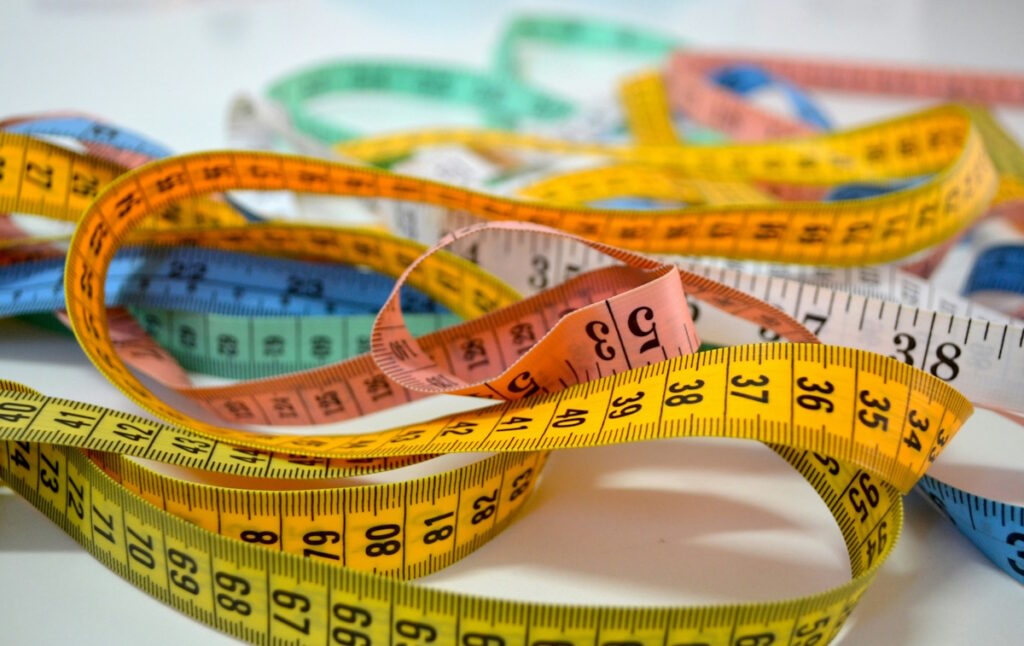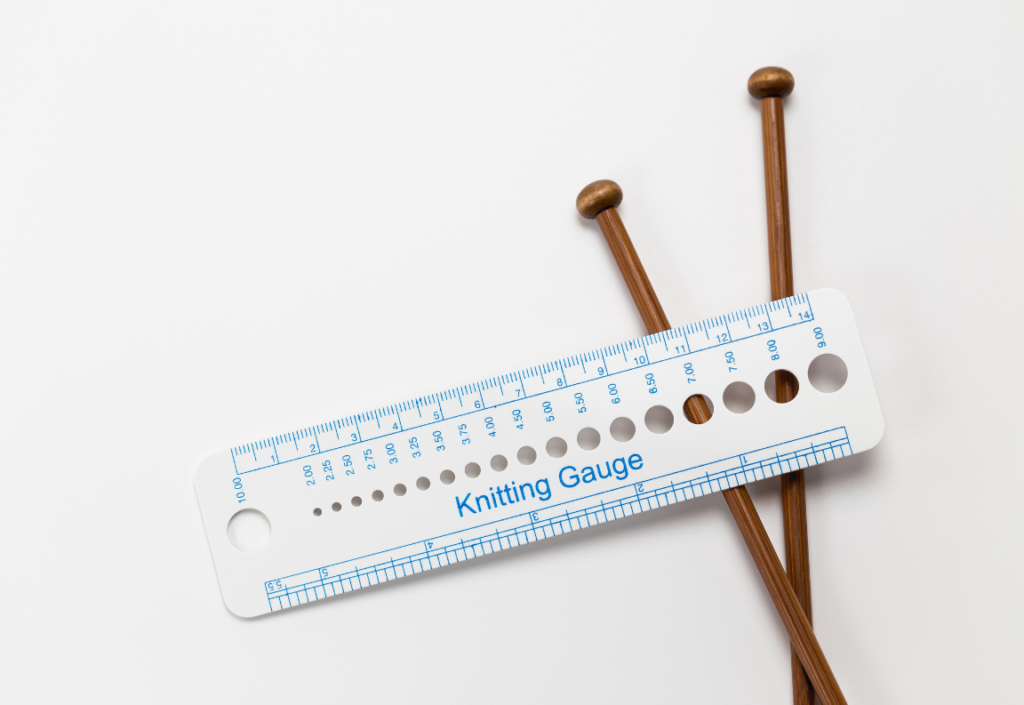Whether you’re starting your first project or have just learned how to purl, having the right tools can make your knitting experience smoother and more enjoyable. In this post, we’ll explore 15 essential tools that every new knitter should have in their kit. From measuring tools to organizers, we’ll have you sorted!

Measuring Tape
A flexible measuring tape is essential for measuring your work and ensuring pieces are the correct size. Whether you are creating a sweater or a blanket, having accurate measurements is key to a successful project.
Sharp scissors

A pair of fairly small, sharp scissors is vital. You’ll need them to cut your yarn if you’re changing colour and to trim your yarn ends when you’ve woven them in. If you use any old pair of scissors, you could find yourself nipping one of your knitting stitches by mistake and your work could unravel.
Tapestry Needles

A tapestry needle is a large, not-too-sharp needle with a big eye. You use it to weave in ends (the leftover yarn strands) once you’ve finished knitting. This tool helps tidy up your work and is essential for completing any knitting project.
Stitch Markers
Stitch markers are small markers that slip onto your needle or clip into your stitches. They help you mark specific points in your pattern, like the beginning of a round or where increases or decreases are needed. They are especially useful for complicated patterns.
Knitting Gauge Measurer
Gauge (or tension as we Brits call it!) is crucial in knitting. It determines how your final piece will look and fit. A knitting gauge measurer allows you to check your stitch and row count over a set area, usually 4 inches. This helps you match the pattern’s gauge and adjust your needle size if necessary, ensuring your finished project turns out just right. You can use a ruler but this handy little L-shaped ruler means you can check your stitch count and rows all at once.
Knitting Needle Sizer

A knitting needle sizer is a handy tool that helps you identify the size of your needles. Often, the markings on knitting needles can fade, making it tough to know their size. A needle sizer has holes of different sizes; you just need to insert your needle into the holes until you find a perfect fit.
Holdall
A holdall or project bag keeps all your knitting supplies and ongoing projects in one place. This is especially useful if you like to knit on the go. A good holdall will have various pockets and compartments to keep things organized.
Needle Point Protectors
Needle point protectors or covers fit on the tips of your knitting needles. They prevent the needles from slipping out of your stitches when you put your work down. They also keep your needles from poking through your knitting bag and protect them from damage.
Sewing Clips
Sewing clips are great for holding pieces together before you sew them, such as when you’re assembling a sweater or attaching sleeves. They are easier to use than pins and won’t snag your yarn.
Crochet Hooks

Crochet hooks are an invaluable tool for knitters, despite their primary association with the craft of crochet. One of the most practical uses of a crochet hook in knitting is for rescuing dropped stitches, a common issue that can occur during knitting projects. When a stitch slips off the needle unintentionally, it can unravel rows of hard work in moments. This is where a crochet hook comes into play.
Row Counter
A row counter helps you keep track of where you are in your pattern, especially in complex projects. You can find manual clickers or digital counters that attach to your knitting needles or sit on your tabletop.
A good light
Good lighting is essential, especially when working with dark colors or in dimly lit areas. A dedicated craft light can reduce eye strain and help you see your stitches more clearly, making your knitting experience more enjoyable.
Stitch Holders
Stitch holders are similar to giant safety pins. They hold stitches that are
not currently being knitted, keeping them secure until you need to work with
them again. This is particularly useful for larger projects like sweaters or
for patterns that require you to hold stitches for sleeves or collars.
Knitting Reference Book
A comprehensive knitting reference book is a must-have. Choose one that covers a wide range of topics from basic techniques to more complicated stitch patterns. A book like this is a great resource for when you need to look up how to do a particular technique. And most books also include troubleshooting tips, which can be incredibly helpful for fixing mistakes without having to start over.
Knitting Journal
Keeping a knitting journal can significantly enhance your knitting practice. In your journal, you can track your projects, including details like the yarn used, needle size, changes made to the pattern, and final dimensions. You can also note what you learned from each project and what you might do differently next time. A knitting journal helps you see your progress over time and serves as a personalized reference book filled with your knitting history.
These knitting ‘tool’s can greatly enhance your knitting experience, making your craft time both efficient and enjoyable. By starting with these essentials, you’ll be well-equipped to tackle any knitting project that comes your way. Happy knitting!
